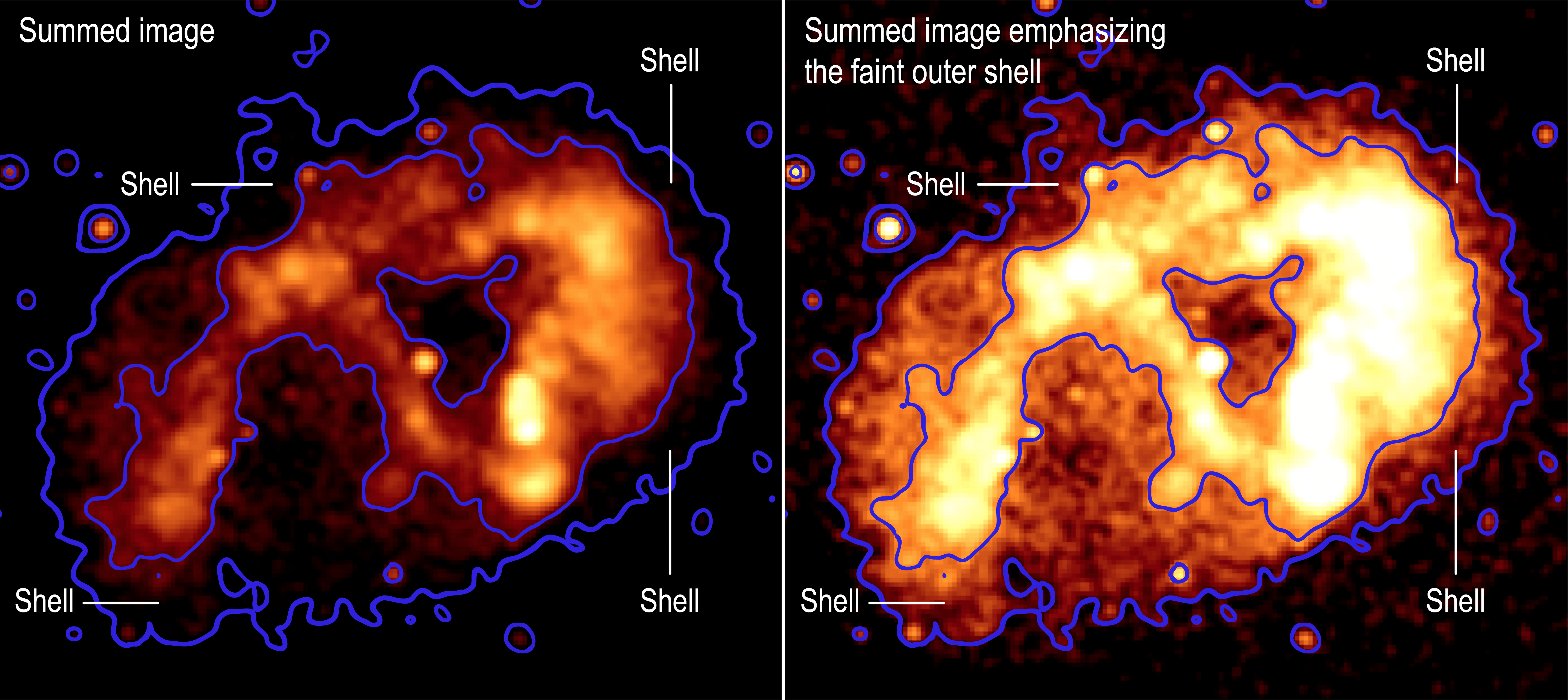Twenty-one years of observations from the Chandra X-ray Observatory have been put together to make a film of Eta Carinae. The movie traces the after-effects of an explosion so large we lack adjectives to convey its scale.
For 18 years in the mid-19th century, the leaderboard of brightest stars was upended when the previously faint star Eta Carinae entered the charts, peaking several times in second place, behind only Sirius. The world had seen nothing like it since Kepler’s supernova in 1604, and Eta Carinae stayed bright a great deal longer. The star responsible is now shrouded in dust thrown off in that event, frustrating optical astronomers in their quest to understand what happened, but instruments operating in other parts of the spectrum, like X-rays, have more success.
Dust wasn’t the only thing that impeded observations of Eta Carinae. It lies so far south that none of the era’s largest telescopes could see it. It’s only in recent decades, when leading instruments were built high in the Andes and space telescopes became able to see the whole sky that astronomers have started to play catch-up.
Eta Carinae is actually two large stars. The smaller has a mass around 30-80 times that of the Sun. The larger is thought to currently be around 90-100 solar masses. This makes it among the most massive stars in our region of the galaxy, but 200 years ago it was more enormous still. The so-called “Great Eruption” that produced the extra brightness threw off between 10 and 45 times the mass of the Sun, explaining why we need instruments like Chandra to see within.
Even Chandra lacks the resolution to see the two stars separately, but the distorted ring of X-ray emissions it can detect has given astronomers a lot of insight into their behavior.
These observations reveal material thrown off in the Great Eruption is expanding at a phenomenal 7 million kilometers an hour (4.5 million mph). At that speed, it would get from the Sun to the Earth in less than a day.
The cloud of material surrounding Eta Carinae, thrown off in the Great Eruption and prior events, is known as the Homunculus Nebula. The first X-ray telescopes revealed a bright ring of sources within it. It’s only now, however, that astronomers have detected a secondary shell of X-ray production three times larger.
“We’ve interpreted this faint X-ray shell as the blast wave from the Great Eruption in the 1840s,” said NASA’s Dr Michael Corcoran in a statement. “It tells an important part of Eta Carinae’s backstory that we wouldn’t otherwise have known.”

Eta Carinae’s complex surroundings reveal the interactions between the legacies of at least two eruptions
Image Credit: NASA/SAO/GSFC/M. Corcoran et al.
The similarity in the shape of the shell and Homunculus led Corcoran and colleagues to conclude both are products of the same event. They think the Great Eruption preceded another event between 800 and 220 years ago. Low-density gas from this event is moving immensely fast by human standards, but still slow enough material from the Great Eruption is catching up, creating a shock wave that reaches millions of degrees and releases the X-rays Chandra sees. The visible material in the Homunculus lags behind, moving at about a third of the speed.
“The shape of this faint X-ray shell is a plot twist in my mind,” said Dr Kenji Hamaguchi of the University of Maryland. “It shows us that the faint shell, the Homunculus, and the bright inner ring likely all come from eruptions from the star system.”
Eventually, Eta Carinae will become a hypernova, closer in brightness to the full Moon than the brightest stars, but the question of when to expect this remains unanswered.
The study is open access in The Astrophysical Journal.
Source Link: NASA Releases 20-Year Video Of The Most Amazing Star We Know